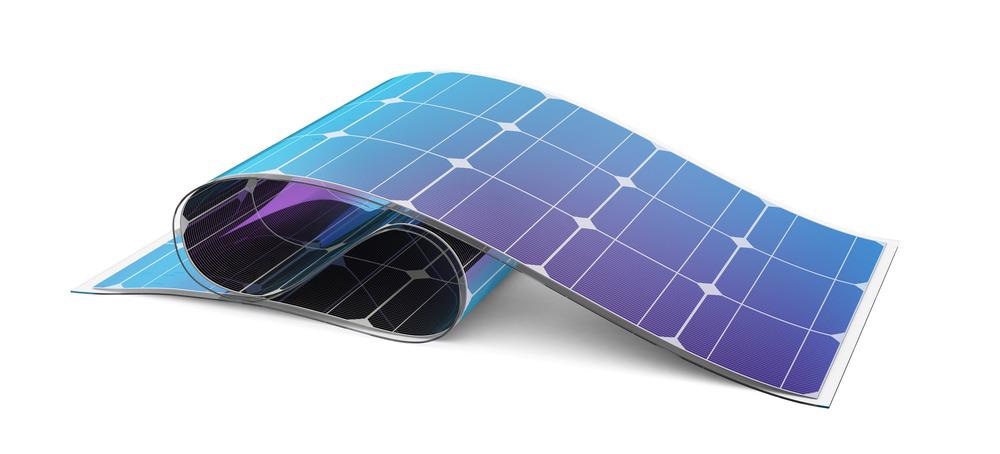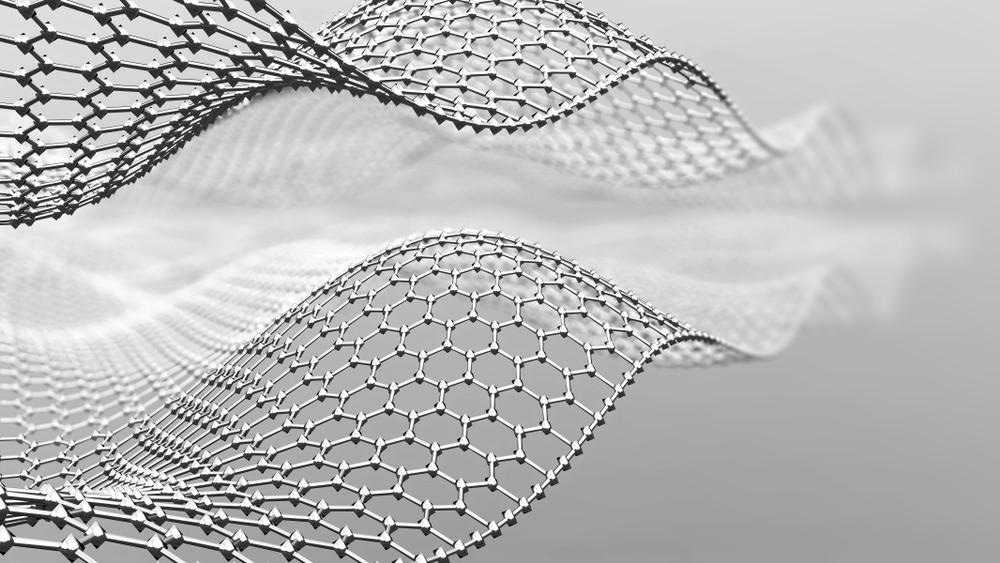Graphene is a substance utilized for a variety of applications owing to its advantageous characteristics. The article discusses the morphology of graphene sheets, their advantages, as well as the latest advances in this particular field of study.

Image Credit: Iaremenko Sergii/Shutterstock.com
Why is Graphene so Important Industrially?
Owing to its unique qualities and benefits, graphene is expected to revolutionize several scientific sectors and lead to massive applications. The hexagonal crystalline lattice morphology of graphene has a zero-energy bandgap. The mechanical characteristics of single-layer graphene are diverse.
The peculiar properties of graphene make it an appealing candidate for flexible electronic effects, bioelectronics, metal-oxide-semiconductor systems, and nanomaterials procedures. Its physical properties may be fine-tuned for specific applications utilizing defect modeling, cyclic stress, chemical bridging, and spraying.
The significant advancement in exploratory manufacturing of graphene metamaterials, particularly the solution-based technique that empowers large-area manufacturing of graphene nanomaterials with monolayer-thickness maneuverability and nanometer surface quality, facilitates exceptional optical characteristics and opens up a plethora of new opportunities in both design and industrial fabrication.
Properties Affecting Graphene Effectiveness for Solar Films
Graphene is very tunable and adaptable. The density of layers of graphene in the system (or in particular elements within a device) and the impacts of doping a graphene-based substance are two notable elements that might modify the nature of the device for graphene-based solar sheets and cells. A single sheet of graphene has 97.7 percent optical absorption.
A three-layered graphene stack has around 90.8 percent optical transparency, and the inclusion of every layer results in a 2.3 percent reduction in optical transparency. Because of the increased hole acceptance frequency, the quenching impact of several graphene layers can be up to 11% more than that of monolayer graphene.
More on AZoM: Graphene Batteries in Electric Vehicles
Doping different atoms onto a strip of graphene may drastically affect its biochemical, physical, electrical, and optical characteristics, and is a frequent strategy in many photovoltaic modules. Doping is classified into two types: p-type and n-type. Doping has varying effects based on both the type of graphene derivatives utilized and the doping procedure. Irrespective of which of these factors (or both) is used in the doping process, the overall effect is increased solar cell performance.
Applications of Graphene Films
Graphene sheets' extraordinary heat capacity allows them to effectively distribute heat from hot emitters. More significantly, the adaptable, lightweight construction and condensed properties of graphene sheets and films encourage its use in portable devices, electronic components, electrical semiconductors, and adaptable light-emitting devices, among other possibilities.
Graphene films may also be used to minimize cross-sectional heat dispersion in glass windows by transporting energy dissipation laterally and lowering near-infrared (NIR) transmittance, whereas commercial solar films focus solely on blocking sun spectrum frequencies while ignoring the heating impact.
The graphene metamaterial film has considerable promise for application in solar energy collection and transformation, thermophotovoltaics, solar saltwater purification, waste management, light emitters, and photodiodes. In addition to the suggested graphene metamaterial's extended lifespan, its solar-thermal efficiency is particularly steady under operating circumstances, making it appealing for industrial usage.

Image Credit: Neon_dust/Shutterstock.com
Manufacturing Processes of Graphene Metamaterial Films
CVD method is one of the primary methods for synthesizing graphene metamaterial films. One method for creating graphene metamaterials is to repeatedly transfer CVD graphene onto an ALD-deposited dielectric substrate.
As it is hard to preserve the integrity of graphene sheets without adding faults of breaking during the transfer process, the performance of the metamaterial declines as the number of layers increases. Furthermore, aligning various layers offers additional issues, making it difficult to achieve a high layered structure. So far, the number of graphene metamaterials layers produced by this technology has been restricted to six.
Most recently, another solution-based synthesis technique has been discussed which is quite cost-effective as well as useful in layered structural morphology fabrication. In general, monolayers of graphene oxide (GO) flakes are negatively charged edges, allowing for the homogeneous distribution of GO particles in water by static charge repulsion, preserving the monolayer framework, and avoiding coagulation.
As a result, electrostatic factors can cause such negatively charged GO layers to attach to positively charged objects. Even before the GO surface was formed, a polyelectrolyte poly diallyldi methylammonium chloride (PDDA) layer with a positive charge was put on the negatively charged platform. The PDDA and GO accumulations are repeated to produce multilayered graphene metamaterial films.
Latest Advances
The latest research by Mr. Kashif and his team published in the International Journal of Energy Research focuses on the usage of a novel organic chemical (K-Azo) to improve the electro-optic and thermal performance of graphene oxide (GO) and reduced graphene oxide (rGO) nanostructured thermal films.
The electrical characteristics of GO with K-Azo demonstrated an increase owing to the K-Azo chromophore, which generated excellent absorption. The inclusion of K-Azo boosted total conductivity. In the proposed system, rGO was coated with Azo dye to act as a hybrid photosensitizer for gathering extra photons from solar radiation. The further molecular design might be critical in improving the dye's covalent connection with rGO in order to have good photosensitizer interaction.
There is a need for more research to understand device stability by exposing the device to sunlight for a longer period of time and consistently measuring the deterioration, which offers an idea of further modification of photosensitizer on the rGO surface.
In short, although graphene solar films have many advantages yet several factors still limit their rapid industrialization and such factors should be extensively researched.
Further Reading
Kashif et. al. 2021. Organic sensitization of graphene oxide and reduced graphene oxide thin films for photovoltaic applications. International Journal of Energy Research, 45(6), 9657-9666. Available at: https://onlinelibrary.wiley.com/doi/10.1002/er.6414
Ishikawa, Ryousuke, et al. 2021. Layer dependency of graphene layers in perovskite/graphene solar cells. Carbon 172. 597-601. Available at: https://www.sciencedirect.com/science/article/pii/S0008622320310356?via%3Dihub
Safie, Nur E. et al. 2021. Recent progress of graphene‐based materials for efficient charge transfer and device performance stability in perovskite solar cells. International Journal of Energy Research 45(2). 1347-1374. Available at: https://onlinelibrary.wiley.com/doi/10.1002/er.5876
Assunção, Ivan CC et al. 2021. Graphene oxide layer-by-layer films for sensors and devices. Nanomaterials 11(6). 1556. Available at: https://www.mdpi.com/2079-4991/11/6/1556
Lin, Han, et al. 2021. Graphene Multilayer Photonic Metamaterials: Fundamentals and Applications. Advanced Materials Technologies. 6(5). 2000963. Available at: https://onlinelibrary.wiley.com/doi/10.1002/admt.202000963
Lin, Keng-Te, et al. 2020. Structured graphene metamaterial selective absorbers for high efficiency and omnidirectional solar thermal energy conversion. Nature communications. 11(1). 1-10. Available at: https://www.nature.com/articles/s41467-020-15116-z
Disclaimer: The views expressed here are those of the author expressed in their private capacity and do not necessarily represent the views of AZoM.com Limited T/A AZoNetwork the owner and operator of this website. This disclaimer forms part of the Terms and conditions of use of this website.